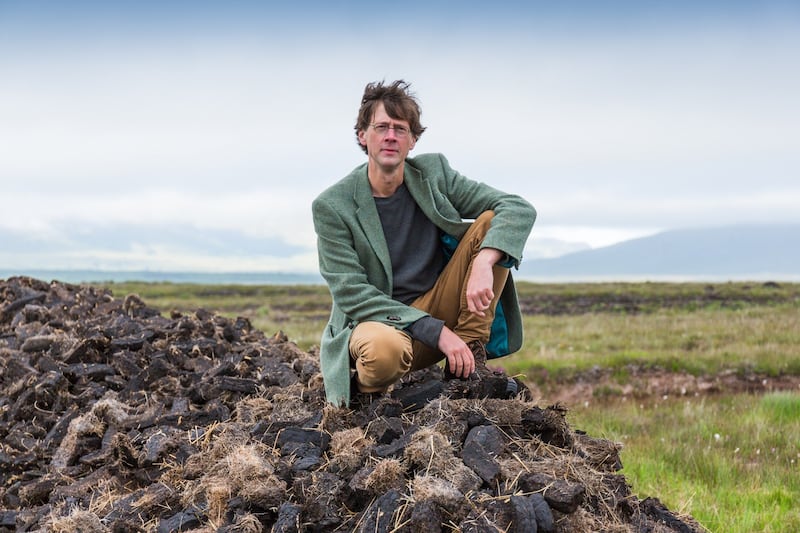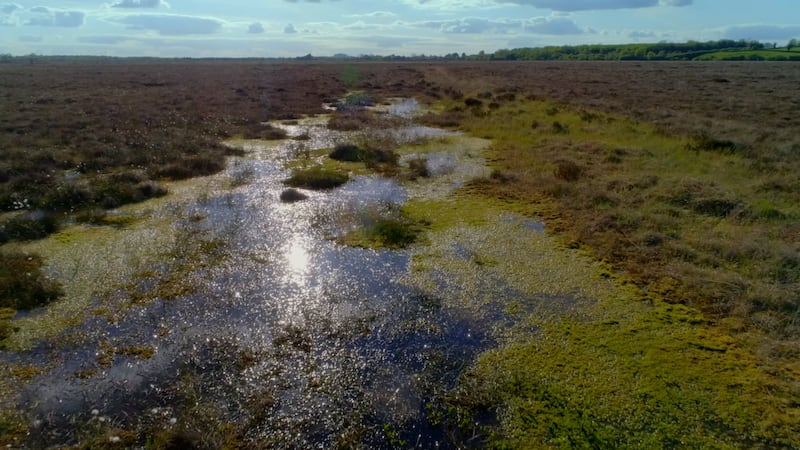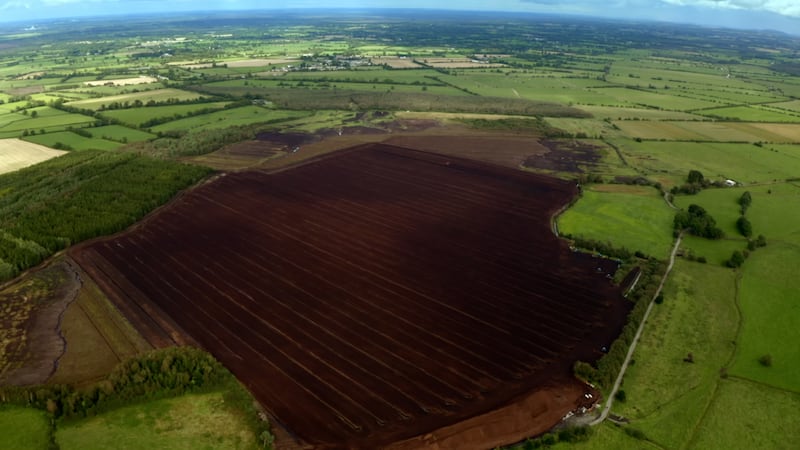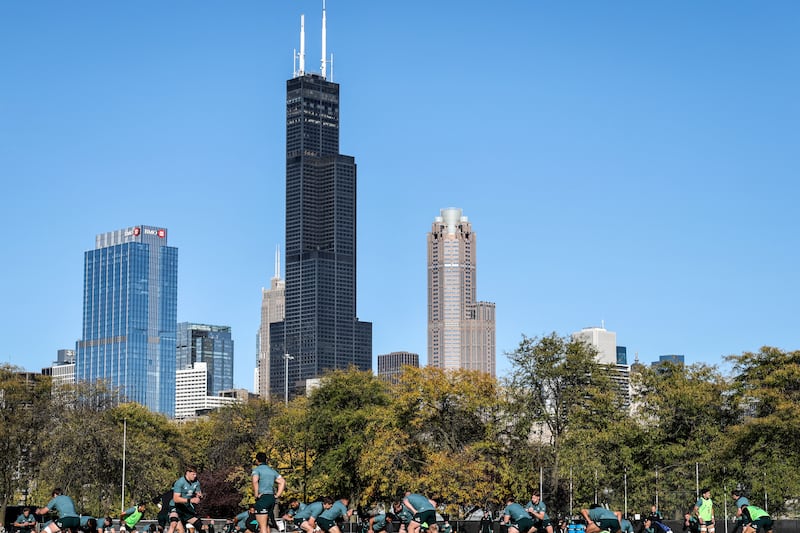Bogs are one of the oldest natural habitats on Earth. They once covered vast swathes of Europe, but have now receded to the point that Ireland possesses 50 per cent of all the intact oceanic raised bog systems left on the Continent. We have more surviving peatland than any other country on Earth after Canada and Finland, and yet we have been systematically destroying it over the past few centuries – and continue to do so.
A new TG4 documentary series, directed by Aenghus Mac Eochagáin of Aniar TV, introduces Ireland's peat people – turf cutters, bog herbalists, peat contractors, ecologists and folklorists to learn what peatland means to them and whether there's a way of fostering agreement between the traditional turf cutters of the west, the industrial peat processers of the midlands, and the ecologists of the east.

We trekked through vast tracts of these heathery, sodden realms of olive, emerald and umber that are not quite land and not quite lake. Their isolation and emptiness make it easy to see how they have always been places of mystery and intrigue – the realm of the púca, the grógach and other ghouls.
It was only really in the 17th century that the Irish began drying and cutting the bogs for fuel. Their exploitation increased after the first World War, when advances in continuous track technology allowed heavy machinery traverse soft ground with less likelihood of sinking, thus enabling the industrialisation of peatlands for profit.
Much of their mystery and magic dissipated as these richly pigmented wildernesses of rusted bracken and spongy sphagnum became places of commerce.
A sod of turf is far more valuable in the ground than it is on the fire
And so, it’s interesting to stand with Bord na Móna representative, Dearbhail Ní Chualain, beneath the 28 wind turbines the company has erected at their denuded bog site at Mount Lucas. She explains how they’ve stopped extracting all peat and now aim to employ the same amount of people to re-wet and restore bogs as they had while destroying them. It’s hard to contemplate that 70 years ago the area would have been covered 10-metres-deep in peat, which has since all been milled into briquettes.
The extent of this large-scale destruction helps clarify why traditional turf cutters point to the unfairness of being asked to stop their centuries-old tradition of cutting small amounts of turf for home use.
Míchéal Ó Máille was given his first sleán by his father when he was seven or eight. “You’d swear I’d won the Lotto! We depended on turf to heat the house and to cook.”

Still today, it gives him pride and a sense of security to cut, dry and carry home his own fuel supply for the family. It’s not something he’s willing to give up. “If the Government came tomorrow and told me to stop cutting turf, I’d say, ‘No way!’ ”
He wonders who would pay the cost of installing a more ecological heating system, and points out that most houses in his locality are not capable of being retrofitted to the specifications required for a heat pump. He acknowledges that some turf-cutting machines are harmful, as they “dig deep into the bog and after the turf has been removed the place ends up saturated four or five years later. But, the machines that use a bucket do no damage. I see no sense in stopping something that we and our ancestors have always done.”
Ó Máille is not alone. There are hundreds if not thousands of turf-cutting families determined to fight to maintain the tradition, and for more than a decade the Turf Cutters Association has fought to protect their rights, backed by the high-profile support of MEP Luke "Ming" Flanagan and the "turf-cutting TD", Michael Fitzmaurice.

Their position is understandable – that is until you meet Daire Ó hUallacháin. The ecologist works with Teagasc and explains how peatland has the ability to accumulate carbon from the air at a rate of up to 0.7 tonnes per hectare per year, sequestering it and then storing it for thousands of years if left undisturbed and if the water table is not artificially lowered.
A 2m-deep stretch of peatland can store 8,000 tonnes of carbon per hectare, and some of Ireland’s midland bogs are up to 12m deep. It’s apparent that what we once dismissed as the most useless part of our landscape is in fact the most viable long-term carbon store in the terrestrial biosphere. As Ó hUallacháin says: “A sod of turf is far more valuable in the ground than it is on the fire.”
Currently, 53 per cent of all soil carbon stored in the island of Ireland is in bogs, which represent just 16 per cent of the land area. Every cut that we continue to make into the bog compromises this, sending not only buried carbon out into the atmosphere but methane as well, which is 23 times more polluting to the upper atmosphere.
The knowledge of this makes it clear that turf-cutting, though traditional, must end, just as we phased out the environmentally destructive practises of chemical dying in vats by rivers and tanning leather in the open landscape. There were equally rich traditions around other practises such as scything corn, ricking hay and salting fish. These, too, led to annual family gatherings with songs and folklore around them, but their end came, just as it is now approaching for turf-cutting.
There is enormous work to do to restore those bogs not too badly damaged, and to re-wet the others so that they stop releasing carbon. Currently, only 1 per cent of raised bogs in Ireland are actively growing, a shocking statistic. It’s vital we continue the process of blocking the open drains so that the sphagnum moss has a chance to begin growing again, absorbing carbon dioxide and storing it in the ground.

The benefits of filling the drains and letting the bogs flood again are not only in terms of carbon storage, but also in mitigating flood damage, in cleansing the water that reaches rivers and in creating the ecological havens for nature and for ourselves.
Bogs may not be as immediately captivating as woodland. But a mysterious and captivating biosphere opens before our eyes once we get to know the many rare and endangered birds, flowers and insects that thrive here, such as an cearc fhraoigh (“red grouse”, literally “hen of the heather”), an fuiseog móna, (“meadow pipits”, literally “bog lark”), and the weird, exotic plants such as druichtín móna (“sundews”, literally “little dew of the bog”), which are Ireland’s equivalent of the Venus flytrap.
We are fortunate to have inherited such a precious ecosystem and it has become our duty to safeguard it. As renowned musician and keeper of lore, Peader Ó Riada acknowledges, “If the Government tells me to stop cutting turf tomorrow, I suppose, I’ll have to stop. Though that doesn’t mean I’ll be happy about it. I’ll just have to live with the fact that I’ll no longer have a reason to spend the day on the bog. It’s a sacrifice for the sake of future generations.”
Even Ming Flanagan, who has fought hard for the right to cut turf, agrees. “We’ve got to change. Just so that in 30 years time I won’t be lying on my deathbed with tears in my eyes looking up at my daughters going: ‘I’m so sorry for what I’m after doing to you’. I wouldn’t be able to live with myself if that happened.”
An Fód Deireanach (The Last Sod) begins on TG4 next Thursday, April 7th at 8.30pm for four weeks
















